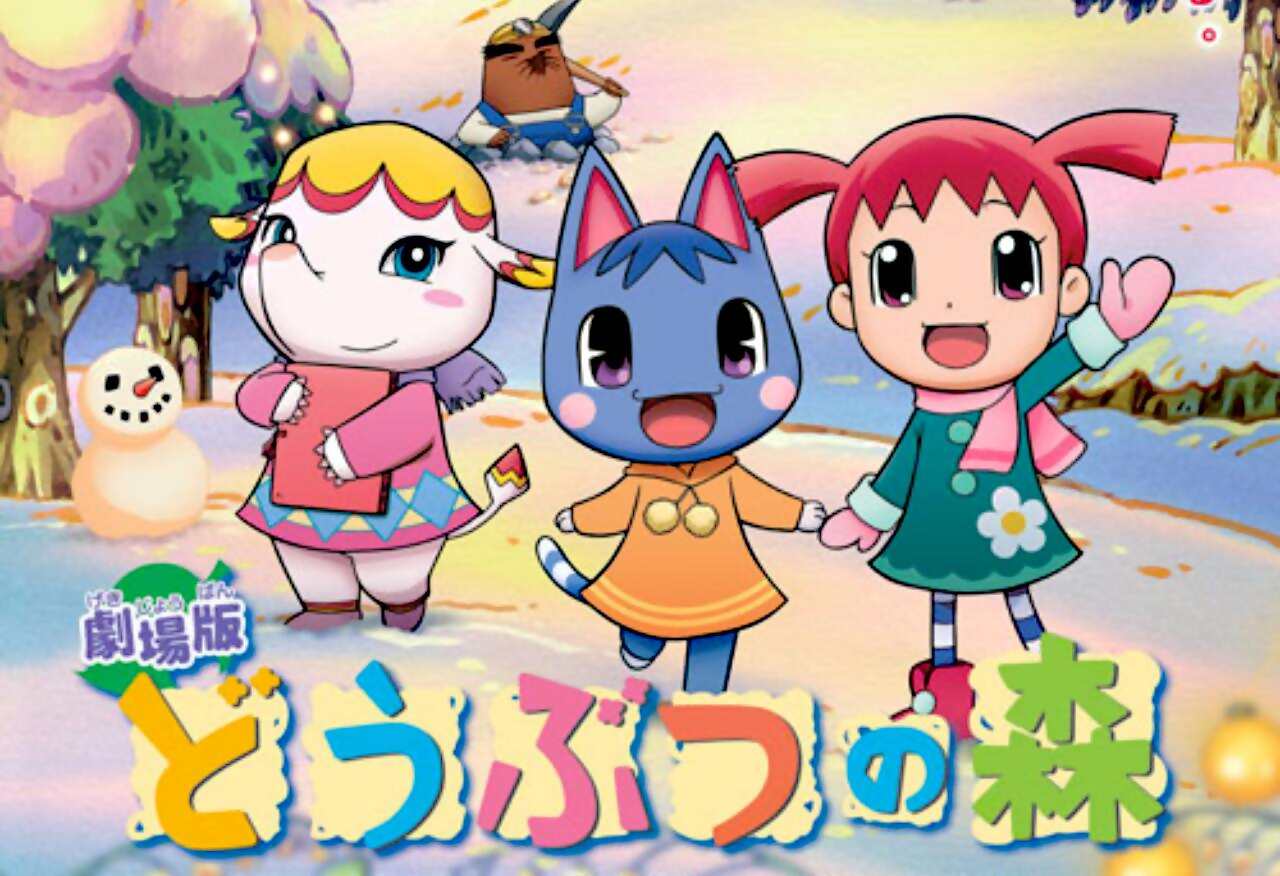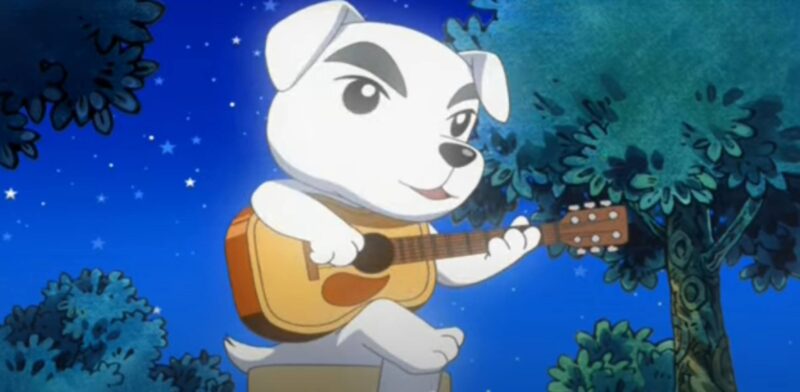
Nintendo commissioned an Animal Crossing anime film in 2006. But despite the games’ exploding popularity, it never left Japan. A look at what we all missed out on:
In 2020, Animal Crossing went from a successful life sim to something approaching a global phenomenon. Among the uncertainty of the pandemic and its lockdowns, millions of people flocked to Nintendo’s Animal Crossing: New Horizons, an island paradise in which they could run errands for the locals – all anthropomorphic creatures – socialise, explore, and make money by crafting and selling items.
It was relaxing, undemanding, and thoroughly charming – an expansion of a formula that Nintendo had iterated on for over 20 years by that point. Few in the west would have known or cared, but the series had its roots in the N64 era and a game called Doubutsu no Mori – Animal Forest – which was only released in Japan. Ported over to the Gamecube and vastly improved, Animal Crossing finally made its US debut in 2002 – thus beginning an enduring new franchise for Nintendo.
Animal Crossing’s cosiness proved so popular that merchandise soon followed, including plush toys and a dinky series of playsets released by Tomy. One piece of Animal Crossing media that has been mystifyingly overlooked, however, is a 2006 animated feature film – Gekijoban Doubutsu no Mori, which roughly translates to Animal Forest: The Movie.
Directed by Jōji Shimura and released in 2006, it amounts to 87 minutes of pure hand-drawn loveliness. Players of the games will immediately recognise the set-up: an 11 year-old human girl named Ai moves to Animal Village in order to start a new life (in those early games, the player arrived by train; here, AI takes a taxi). Once there, she’s shown around the leafy idyll and its eccentric residents; there’s Pelly the pelican, who works in the post office, Tortimer the tortoise, the village’s ornery mayor.
Ai’s most significant new acquaintance, however, is racoon shopkeeper Tom Nook. Being a capitalist at heart, he immediately puts Ai to work as a delivery driver. The rest of the film then carries the same relaxed vibe as the games, with Ai meeting and making friends with more and more residents as she goes around delivering parcels.
If anything, the movie’s even more carefree than its source. Ai may have a day job, but there’s no mention of Tom Nook giving her a house and then demanding that she work and save money until she’s paid off the mortgage, as he does in the games. This latter element has turned Tom Nook into one of the more discussed characters in videogames; is he the village’s benevolent landlord, or a ruthless monopolist making money hand over fist?
No matter: making money takes a back seat in the film, and the focus instead is on friendship – and in this respect, Animal Crossing: The Movie is thoroughly disarming. The animals Ai meet all offer their perspectives on life, their favourite hobbies, their ambitions and worries. They go on little adventures together in caves, where they discover the remarkably intact fossilised remains of dinosaurs. Ai finds a message in a bottle which says that planting trees around the village will somehow cause a special event to occur during that winter’s snow festival. It all trips wistfully along until a quite moving moment in which Ai learns that one of her new friends has decided to move away. And then things get really strange in a cosmic final third that we won’t spoil here.
That late narrative departure aside, fans of the games will spot the references and characters right away. There’s cherry picking and digging; visits to the beach and concerts from the super-cool guitar-playing canine, KK Slider. Mr Resetti, a relatively minor character who was eventually retired from the games for being too scary, even gets a few scenes here.
In this regard, Animal Crossing: The Movie provides a fresh perspective on the games’ quietly effective design. Adapted by character designer Sayuri Ichiishi, the assorted critters and locations look just as adorable in hand-drawn 2D (with a hint of CGI here and there) as they did in their console outings – probably because playing the games also felt like being sucked into a cartoon world. The animation may not have the detail or sophistication of, say, a Studio Ghiibli movie, but the clean style entirely fits the wide-eyed innocence of its subject. Similarly, the music queues, given an orchestral arrangement here, sound lovelier than ever: the theme that accompanies the village museum is an infectious woodwind lullaby.

Produced by animation house OLM, Animal Crossing: The Movie was released in Japan just before Christmas in 2006. It was a modest success, reaching number three at the box office and making just over $16m before it left cinemas. The following year, Nintendo announced that it had no plans to dub the movie and release it outside Japan – which was a little perplexing even at the time.
The film’s Japanese release came not long after the launch of the latest game, Animal Crossing: Wild World, for the Nintendo DS. It was a hit in its home country and also overseas – it sold well over 11 million copies in its lifetime. Had Animal Crossing: The Movie been released on DVD in the west, it surely would have found eager buyers among fans – even if the film’s lack of stakes and nods to the games would have mystified everyone else.
What’s more confusing is that, as Animal Crossing’s fame has blown up in more recent years, Nintendo has remained content to forget all about the movie. Animal Crossing: New Horizons has sold some 45 million copies to date; during the pandemic, it became such a sensation that mainstream outlets like The New York Times began reporting about its use as a refuge.
Meanwhile, as players met and socialised in the game’s sunny island world, interest in the series’ history grew. A quick search online reveals a wealth of articles from the period from people discovering the film’s existence for the first time (“It’s OK, we didn’t know there was an Animal Crossing movie either,” Nintendo Life wrote in 2020.)
Rather than capitalise on that interest, Nintendo has left the film in its archives. Perhaps it’s because the company thinks a hand-drawn animated feature might look a bit outmoded to mainstream audience (this writer would argue the opposite: Animal Crossing looks timeless in a way that some CG films from the 2000s don’t). Or maybe it’s due to some legal or licencing issue we aren’t privy to.
Whatever the reasons are, an animated film that would likely delight Animal Crossing fans everywhere remains frustratingly obscure – and unwatchable unless you’re willing to hunt down a dodgy online version from somewhere. In Japan, the Animal Crossing movie got a limited edition DVD release with an animal-themed pouch. If Nintendo were to change its mind and release this set in the west, we’re fairly sure a sizable number of fans would clamour to get hold of a copy.
One final note before we go: the film’s original promo site can still be found via archive.org, and it’s full whimsical artwork and posters. Enjoy.








